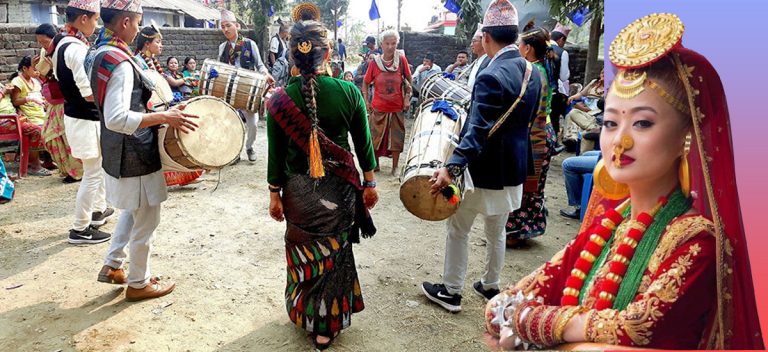
Our country Nepal is a garden that is home to hundreds of castes and numerous indigenous ethnic peoples, not only four castes and 36 sub-castes. Among them, Limbu are part of the Kirat religious groups and are one of the Nepal’s 59 indigenous peoples. Limbus are the second-largest tribe of the indigenous Kiranti people, who live in Nepal in the easternmost region of the Himalayan range east of the Arun River, as well as northern India, mostly in the states of Sikkim, West Bengal, and Assam. They mostly live in the eastern highland districts of Nepal, such as Taplejung, Panchthar, Ilam, and Jhapa in the Mechi zone, and Sangkhuwasabha, Tehrathum, and Dhankuta in the Koshi zone, which are traditionally known as further Kirat or Limbuwan, their native homeland.In the early twenty-first century, the Limbu totaled over 380,000 people. And Limbus can now be found across the nation, even in the Kathmandu valley.
Limbu people have their own culture and traditions. Mundhum is their oral holy scripture, which includes cosmology, cosmogony, mythology, and tales about the origins of history. Mundhum guides and inspires their rituals, customs, and celebrations. Limbu have a diverse culture and mythology.They have their own songs and dances that are unique to them and distinguish them from other culture. Limbu dances include Kelang (Chyabhrung, or drum dance), Yalang (DhanNach, or paddy dance), and Yemalang (Bijwani, or female shaman’s dance), among others. They also have their own songs, such as Hakpare, Palam, and others.Phedangma, Samba, Yeba, Yema, and Angsi are Limbu’s priests and shamans. They are sacred ceremonial professionals who execute religious activities and lifecycle rites while delivering the Mundhum scripture. They are Mundhum’s caretakers. Not only are they performers, but they are also healers. They have extensive knowledge of medicinal plants in this and other parts of the world.
Limbus are aware of and they participate in a variety of major Hindu rituals, but they also have their own practitioners and beliefs. They offer blood sacrifices as a form of religion. They think that bloodline divinities are not passed down through the generations patrilineally.The Limbus put a high priority on drinking and dancing and they enjoy drinking alot. Alcoholic beverages are the most in every functions of Limbus. Weddings, funerals, gift exchanges, and conflict management all include a lot of drinking, especially beer. Visitors from nearby and from the town are invited to dancing parties and they are offered food and drinks. These gatherings allow young Limbu girls and boys to mingle while dancing and drinking.Limbus are known for marrying inside their own tribe. In Limbu culture, cross-cousin marriage is prohibited. Marriage might take place between a man and the widow of his elder brother if both parties consent. Outside the family, marriage between a man and a woman is also feasible, either by agreement or by mutual permission of the man and woman in concern.
Nepal is abundant in biodiversity, ecology, indigenous knowledge and skills, direct and indirect culture, and tradition. However, such priceless antiques, environment, and indigenous communities’ heritages have not been properly safeguarded and used.Besides from Brahmin Guthis and maybe some Newari native jatras, no other traditional groups, institutions, or community-based groups have received government funding or protection. As a consequence, the majority of them like the Limbus are surviving, and many of of them are on the edge of a major crisis.Wider knowledge systems, such as the state, multinational companies, and institutions, should help and take special measures for recognizing Limbu indigenous knowledge and skills and make appropriate efforts to improve it, and Limbu culture should be safeguarded at the local, national, and international levels to preserve it.
Article written by: Saru Niraula for Land Nepal